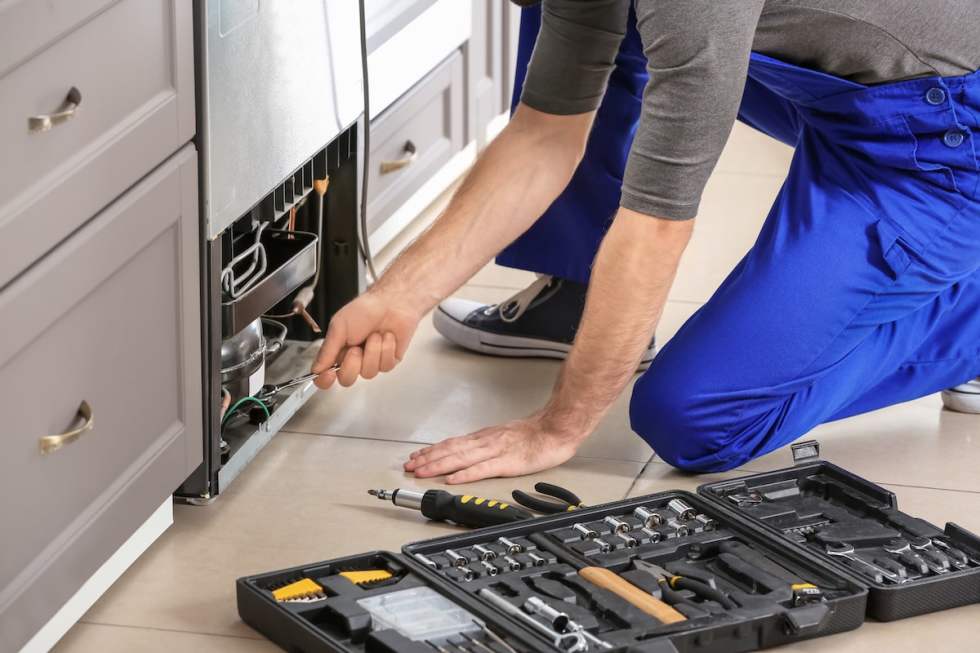South Bank at Quarry Trails
- 92 units available
- Studio • 1 bed • 2 bed • 3 bed
- Amenities
In unit laundry, Patio / balcony, Granite counters, Pet friendly, Stainless steel, Walk in closets + more

A maintenance request is the official process for telling your landlord or property manager about something in your apartment that needs repair. Most landlords let you submit requests by phone, online portal, or email. Emergencies like broken heat, flooding, or gas leaks are handled within 24 hours, while more routine issues may take a few days.
This guide explains when and how to submit a request, what counts as an emergency, and what to do if your landlord doesn’t respond.
Not every issue requires a formal request—some are simple fixes renters can handle themselves. Simple fixes may include:
If you’re on the fence about whether an issue is up to you to fix, try sending your landlord a message to inquire.
For any issues beyond minor repairs or those listed as your responsibility in the lease agreement, submit a maintenance request. This includes:
Tip: Always check your lease. Some landlords specify which repairs are the tenant’s responsibility.

There are specific maintenance tasks your landlord or property manager might handle that don't require a formal request. These typically involve:
Remember, if you're unsure whether an issue requires a maintenance request, always refer to your lease agreement or consult with your landlord/property manager.
Submit a request as soon as you notice the problem. Waiting can make the issue worse and may even make you responsible if the damage spreads.
Some issues require immediate action, not a standard request. Emergencies typically include:
In these situations, call your landlord’s after-hours hotline or emergency number right away. Don’t wait until business hours. Fast reporting protects your safety and can prevent further property damage.
Landlords usually provide instructions when you sign your lease. Common methods include:
It's important to communicate effectively with your landlord regarding maintenance requests. We wrote a guide on what to do if your apartment is uninhabitable, but here are some more tips to help you out. If you’ve submitted a request and nothing happens, take these steps:
Your Name Your Apartment Number
Date
Landlord Name Property Management Company (if applicable) Address
RE: Maintenance Request - [Brief Description of the Issue]
Dear [Landlord Name],
This letter serves as a formal follow-up to my initial maintenance request, submitted on [Date of initial request] through [Method of initial request], regarding [Brief description of the issue]. In my request, I detailed the issue as follows: [Detailed description of the issue, including location and any relevant details].
Unfortunately, I haven't received a response to my initial request. I kindly request that you acknowledge my request and provide a timeline for when the issue will be addressed.
Please feel free to contact me at [Your phone number] or [Your email address] to discuss this further.
Thank you for your time and attention to this matter.
Sincerely,
[Your Signature (if sending a physical copy)]
Please note: This is a template and should be adjusted based on your specific situation. It is recommended to consult with a tenant advocacy organization or legal professional for specific guidance if needed.
Most repairs are covered by your landlord, but tenants may be charged if:
Always review your lease so you know where responsibilities fall.

Knowing what type of building you live in sets realistic expectations.
If you’re moving into a new apartment or your first apartment, consider using our tools to help you get started. We allow you to choose your ideal budget, location, and amenities, and then flex those choices in order to view even more options. Take our easy quiz to get started.
Calling is fastest, especially in emergencies, so make sure to keep a list of emergency numbers. For non-urgent issues, online portals are efficient and leave a paper trail.
Emergencies must be fixed within 24 hours in most states. Non-urgent issues may take 1–7 business days, depending on complexity.
Usually no. In most states, landlords must give 24 hours’ notice except during emergencies.
Document the issue, resubmit your request, and follow up. If it’s still unresolved, escalate with local housing authorities.
In some states, yes—but only after following legal steps. Check local laws or talk with a tenant advocacy group before withholding rent.



In unit laundry, Patio / balcony, Granite counters, Pet friendly, Stainless steel, Walk in closets + more
In unit laundry, Hardwood floors, Dishwasher, 24hr maintenance, Stainless steel, Walk in closets + more